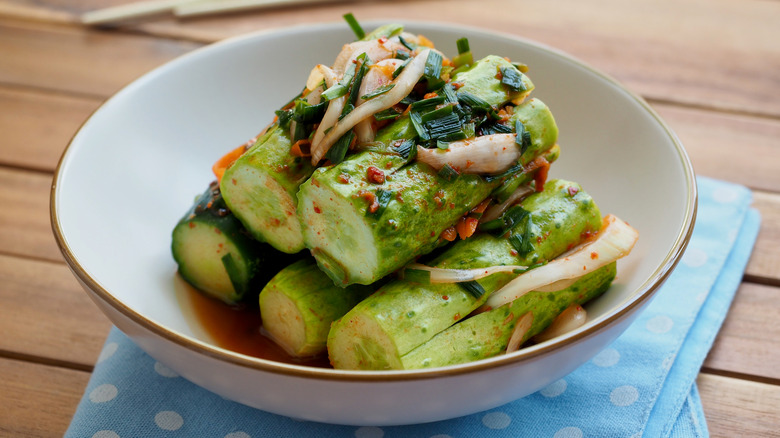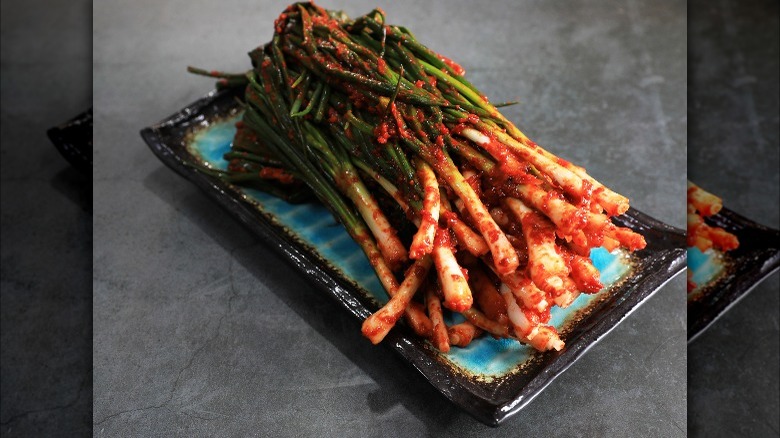Make Cucumber Kimchi And Thank Us Later
The most iconic Korean food is arguably kimchi, a popular side dish most commonly made from fermented napa cabbage in a spicy paste and paired with fried rice, stews, and Korean barbecue. If you don't have the luxury of living near a Korean market to pick some up, making it at home can become a fun adventure. Best of all, kimchi is not cabbage-exclusive: You can use any veggies you already have at home. Do you have a stockpile of cucumbers? Well, cucumber kimchi is an incredibly easy solution.
Making cucumber kimchi may seem daunting, but it's actually pretty simple. Start by letting sliced cucumber sit in salt to drain the excess moisture. Then, prepare sliced carrots and chives. Meanwhile, for the kimchi paste, you'll need gochugaru (Korean chili powder), fish sauce, sugar, garlic, ginger, onion, and apple or Asian pear. Blend them up; we're making a paste, after all. Finally, rub the paste on the cucumbers, carrots, and chives, and your cucumber kimchi is complete! You can eat it fresh or ferment it on the counter for a few hours before serving.
Other vegetables you can use to make kimchi
The estimated 200 different types of kimchi prove that even if you don't have cabbage or cucumber in your fridge, you can still make it. For example, some types of kimchi are made from radish, mustard greens, perilla leaves, and watermelon rinds. The best part is, in Korean cuisine, each type has certain foods they pair well with — but don't worry, there really are no rules about ways you can use kimchi. This versatile side dish can also be used as a condiment or added to other dishes as a secret ingredient.
Are you overwhelmed by the possibilities? It's easy to stick to the classic pairings and kimchi varieties. One non-cabbage version you might find at a Korean barbeque restaurant is made from whole green onions with trimmed roots, as it goes great alongside meat — or it can be eaten with plain rice. Radish kimchi is another one you might come across at Korean restaurants. This version is commonly served with soup dishes like seolleongtang (ox bone soup) and kalguksu (knife-cut noodle soup). The warmth and simplicity of these soups sometimes require an extra bite of flavor — and whatever vegetable base you use, the salty, spicy, fermented kimchi is always there when you need it.

